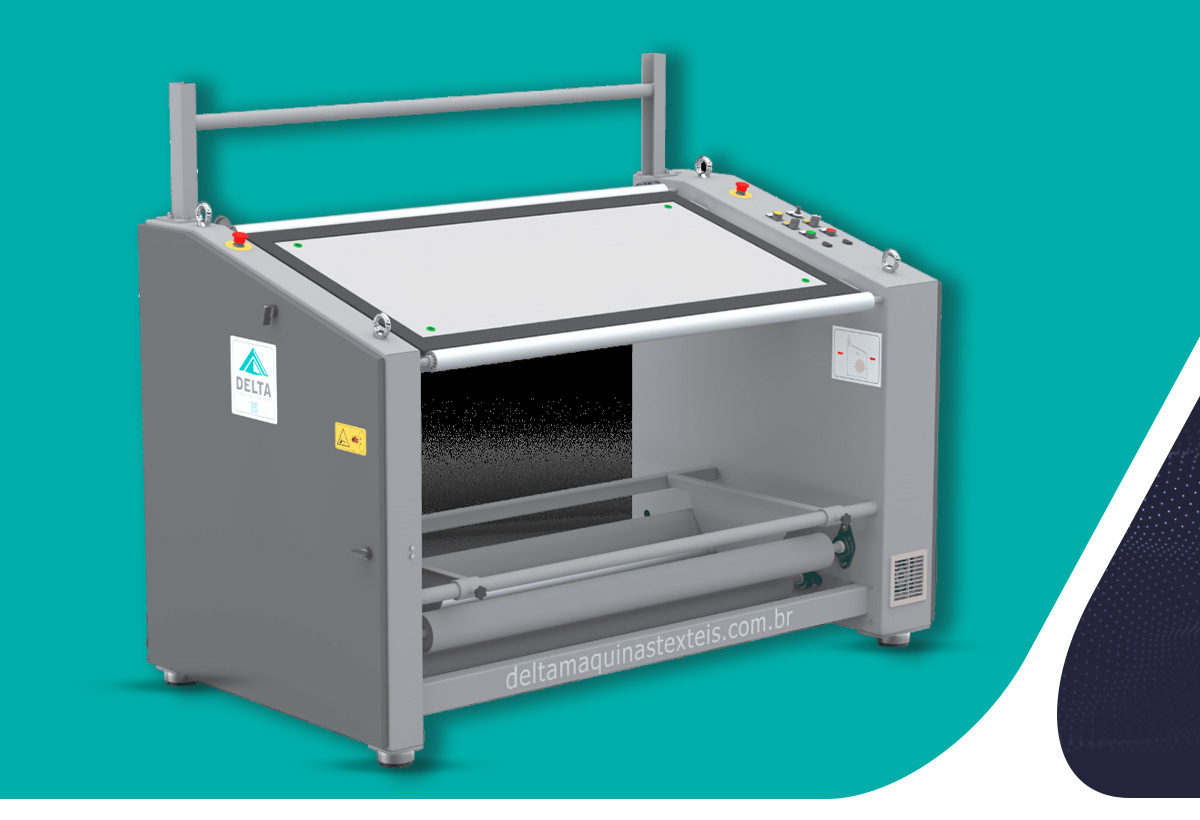The industrial segment has processes, very specific standards and procedures, mainly in the textile sector. To guarantee their quality and effectiveness, it is essential to invest in optimization and standardization practices, such as the 5s methodology.
It is an important tool, used since the 1950s, to solve significant obstacles and bottlenecks to competitiveness. But they are often ignored or unknown by managers.
So, keep reading to find out more about this concept and tips on how to implement it in your industry!
Let’s go?
What is the 5s methodology?
The 5s methodology is a management tool aimed at productivity and quality, mainly in the industrial sector. It emerged in Japan after the Second World War and was developed by professor Kaoro Ishikawa.
In this scenario, it was necessary to restructure and rebuild the devastation generated by the war. Not by chance, the method became part of the Toyota Production System.
Its stages were developed on the industrial factory floor. Here, the objective was enhance the competitiveness of the Japanese in relation to the international market.
The system was so efficient that it not only boosted the Japanese economy, but also made them one of the greatest powers in the world.
Therefore, the 5s methodology seeks organization, discipline and cleanliness.
Da mesma forma que tem o intuito de eliminar ciclos de waste and promote the safety of production processes and the workplace. 5s makes it possible to perform tasks with minimal failures, downtime and accidents
.
Apesar de sua aplicação ser simples, os resultados são perceptíveis e altamente importantes para a indústria.
What does each S in the 5s methodology mean?
The 5s methodology is based on five principles described in Japanese. Each represents a process that can be improved and optimized in the industry.
Understand their meaning below!
1. Seiri (use)
At this stage, the main resources available for the work are surveyed. That is, the mapping of factory materials, objects and equipment.
Em seguida, eles são separados em ordem de prioridade, conforme a necessidade.
The objective here is to exclude everything that is unnecessary to ensure space optimization and greater operational efficiency.
2. Seiton (organization)
This principle guides that all tools and raw materials are placed and organized in places that are easily and quickly accessible..
Afinal, o desarranjo dificulta a localização.
Therefore, it affects your team’s productivity, as it will take a lot of time to find the materials. This opens up a space for idleness
Therefore, the most relevant objects are kept closer to the production line.
Those used infrequently are placed further away. And finally, those that are not used or are broken must be discarded (as seen in Seiri).
3. Seiso (cleansing)
This step reflects the importance of cleaning the work environment. Consider that the maintenance of the industry’s physical space influences:
- Interpersonal relationships;
- The reduction of accidents;
- A Conservation of equipment and tools.
To do this, it must be ensured that everyone carries out this task regularly, avoiding the accumulation of dirt and clutter.
Therefore, it is necessary to develop cleaning and maintenance routines and training to ensure the quality of activities.
And, at all times, anything found to be outdated or disused must be removed and replaced on the production line.
4. Seiketsu (standardization and health)
This sense suggests that the standardization of colors, lighting and location, including bathrooms and cafeterias, helps to prevent bottlenecks.
Eles que, por sua vez, podem afetar a saúde dos colaboradores e provocar acidentes.
According to the 5s methodology, this step allows the reduction of ergonomic problems and presents improvements in mental, physical and safety balance.
To achieve this, you must invest in automation and in the development of behavioral norms and values. Here, the aim is to promote the standardization of actions aimed at industry health, safety and hygiene.
Guidelines and procedures are created to maintain the quality of previous practices. In the same way that roles are established for each employee. With this, the Resources will be used consciously and optimally.
Read also: 5 benefits of process standardization in the textile industry
5. Shitsuke (discipline and self-discipline)
The objective of this last step is to guarantee the application of the 5s. To do this, it is necessary to establish a culture of discipline that aims to create habits that allow the maintenance of the practices mentioned above.
In this fifth S, moral and ethical standards are highlighted, mainly those specific to each employee.
An example of when this sense is being well implemented is the execution of tasks without the need for a supervisor. This makes work healthier, more enjoyable and productive.
In short, it reinforces the importance of everyone’s commitment to continuous improvement, facilitating communication and compliance with what was planned.
Why invest in the 5s methodology?

The 5S methodology can lead to a series of operational improvements that positively impact productivity and the organizational environment as a whole.
These gains are essential for the competitiveness and marketing prominence of the industry in the textile sector. After all, according to Abit, there are already more than 24.3 thousand formal production units across the country. With the high level of competition, the ideal is to guarantee automated, organized and standardized production
.
Gerando assim, eficiência, quality in results and, of course, end customer satisfaction.
Especially because the 5s methodology provides not only advantages for the industry, but also for the entire work environment. This space becomes more innovative, healthy and motivated.
Therefore, the main benefits of the 5s methodology are:
- Significant increase in productivity;
- Production quality;
- Increased motivation;
- Cost reduction;
- Lower incidence of accidents;
- Conservation of machines, equipment and tools;
- Space gain;
- Time savings;
- Reduction in idleness.
The 5s methodology is a system that allows you to achieve two factors that are already extremely necessary for industries: productivity and quality. In such a competitive and volatile scenario, such as the textile sector, these gains are no longer differentiating.
It’s that simple! You need to be prepared for market demand and competition. And to do this, you must invest in organization and structuring of your industry.
Read also: 4 problems that hinder the growth of the textile industry
How to apply the 5s in the workplace?
The 5s methodology, as we saw above, is a management technique.
Logo, poderá ser aplicada em diversas áreas de controle e administração da indústria têxtil. Just adapt the principles according to each specification. In any case, to implement the method it is important to start by raising awareness among your production team.
.
Esse é o ponto de partida para alcançar a motivação e máxima produtividade com qualidade. Such guidelines can be addressed in training, lectures and meetings.
Then, you need to keep in mind that every process requires time, both for complete application and to adapt to the characteristics of your production line.
In addition to training and adaptation time, it is important to maintain constant monitoring of each stage.
And it’s worth highlighting that there is also 5s in industrial maintenance! In the textile sector, this methodology is essential for the conservation of the main assets: machinery. 5s maintenance is nothing more than the methodology presented here, applied in the processes of preservation, correction and care of textile equipment and machines.
Read also: Maintenance 4.0: what does it mean in the industry?
Understand how to apply 5s maintenance
The 5s concept must be explored during the development of Maintenance Planning and Control (PCM).
The methodology will be a guide during the construction of an efficient program that aims to promote pre-determined and assertive maintenance actions.
To do this, you can follow the following steps:
1. Planning
Form a team committed to the development of processes and set clear goals with the maintenance plan. How to increase the efficiency by x% or reduce waste by y%.
2. Training
Train the team on the 5s principles to reinforce the importance of adapting to the method.
3. Implementation of 5s steps in industrial maintenance
- Eliminate outdated and old tools and machines, which often generate losses;
- Organize the layout of the production line;
- Establish cleaning routines;
- Standardize processes;
- Encourage discipline.
4. Monitoring
- Carry out periodic reviews, evaluate indicators and the efficiency of 5s;
- Collect feedback from employees;
- Make adjustments when necessary.
And, at all times, maintain up-to-date communication with your industrial maintenance team.
A implementação dos 5s não é uma ação isolada.
E, sim, um processo contínuo que exige adaptações e aperfeiçoamentos ao longo do tempo.
Know the maintenance indicators!
As we have seen, the 5s methodology can be applied in different areas of the textile industry. However, in maintenance, this practice is even more assertive in guaranteeing the conservation and availability of the machinery, as well as the performance of the entire production. During its implementation, it is essential to monitor indicators
which point out the efficiency of maintenance practices. So, click the button below to download our free infographic and learn about 9 of them.




